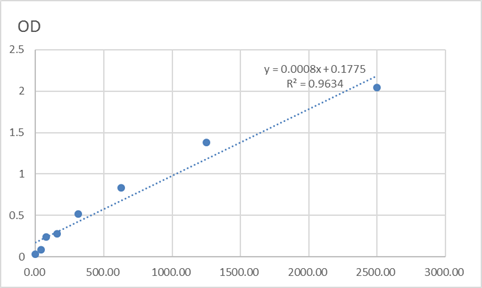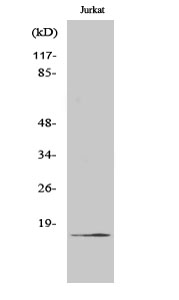Cleaved-Factor VII LC (R212) Cell-Based Colorimetric ELISA Kit
- Catalog No.:KA3958C
- Applications:ELISA
- Reactivity:Human
- Gene Name:
- F7
- Human Gene Id:
- 2155
- Human Swiss Prot No:
- P08709
- Mouse Swiss Prot No:
- P70375
- Storage Stability:
- 2-8°C/6 months
- Other Name:
- Coagulation factor VII (EC 3.4.21.21) (Proconvertin) (Serum prothrombin conversion accelerator) (SPCA) (Eptacog alfa) [Cleaved into: Factor VII light chain;Factor VII heavy chain]
- Detection Method:
- Colorimetric
- Background:
- catalytic activity:Selective cleavage of Arg-|-Ile bond in factor X to form factor Xa.,disease:Defects in F7 are the cause of factor VII deficiency [MIM:227500]. Factor VII deficiency is a rare hereditary hemorrhagic disease. The clinical picture can be very severe, with the early occurrence of intracerebral hemorrhages or hemarthroses, or, in contrast, moderate with cutaneous-mucosal hemorrhages (epistaxis, menorrhagia) or hemorrhages provoked by a surgical intervention. Numerous subjects are completely asymptomatic despite a very low F7 level.,function:Initiates the extrinsic pathway of blood coagulation. Serine protease that circulates in the blood in a zymogen form. Factor VII is converted to factor VIIa by factor Xa, factor XIIa, factor IXa, or thrombin by minor proteolysis. In the presence of tissue factor and calcium ions, factor VIIa then converts factor X to factor Xa by limited proteolysis. Factor VIIa will also convert factor IX to factor IXa in the presence of tissue factor and calcium.,online information:Factor VII entry,online information:The Singapore human mutation and polymorphism database,pharmaceutical:Available under the names Niastase or Novoseven (Novo Nordisk). Used for the treatment of bleeding episodes in hemophilia A or B patients with antibodies to coagulation factors VIII or IX.,polymorphism:Individuals with the Q allele (Gln-413) seems to have a decreased susceptibility to myocardial infarction.,PTM:The iron and 2-oxoglutarate dependent 3-hydroxylation of aspartate and asparagine is (R) stereospecific within EGF domains.,PTM:The vitamin K-dependent, enzymatic carboxylation of some glutamate residues allows the modified protein to bind calcium.,similarity:Belongs to the peptidase S1 family.,similarity:Contains 1 Gla (gamma-carboxy-glutamate) domain.,similarity:Contains 1 peptidase S1 domain.,similarity:Contains 2 EGF-like domains.,subunit:Heterodimer of a light chain and a heavy chain linked by a disulfide bond.,tissue specificity:Plasma.,
- Function:
- positive regulation of immune system process, regulation of leukocyte migration, positive regulation of leukocyte migration, regulation of leukocyte chemotaxis, positive regulation of leukocyte chemotaxis, proteolysis, anti-apoptosis,blood coagulation, blood coagulation, extrinsic pathway, hemostasis, response to wounding, positive regulation of signal transduction, regulation of protein kinase cascade, regulation of platelet-derived growth factor receptor signaling pathway, positive regulation of platelet-derived growth factor receptor signaling pathway, positive regulation of cell communication, positive regulation of protein kinase cascade, regulation of cell death, regulation of cell migration, positive regulation of cell migration, regulation of response to external stimulus, positive regulation of response to external stimulus, regulation of locomotion, positive regulation of locom
- Subcellular Location:
- Secreted.
- Expression:
- Plasma.
- June 19-2018
- WESTERN IMMUNOBLOTTING PROTOCOL
- June 19-2018
- IMMUNOHISTOCHEMISTRY-PARAFFIN PROTOCOL
- June 19-2018
- IMMUNOFLUORESCENCE PROTOCOL
- September 08-2020
- FLOW-CYTOMEYRT-PROTOCOL
- May 20-2022
- Cell-Based ELISA│解您多样本WB检测之困扰
- July 13-2018
- CELL-BASED-ELISA-PROTOCOL-FOR-ACETYL-PROTEIN
- July 13-2018
- CELL-BASED-ELISA-PROTOCOL-FOR-PHOSPHO-PROTEIN
- July 13-2018
- Antibody-FAQs



